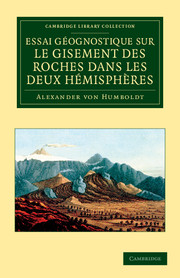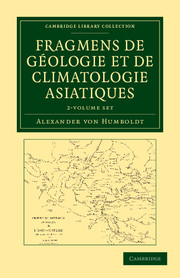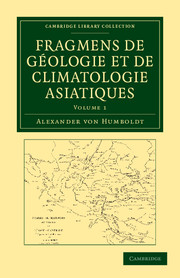Tableaux de la nature
Alexander von Humboldt (1769–1859), 'the greatest scientific traveller who ever lived' according to Darwin, made groundbreaking contributions to the fields of geography, oceanography, climatology and ecology. In 1804, he returned from a five-year exploration of Latin America with an incredible wealth of specimens and data which provided the foundations for his theories on the natural order. He expounds them in this book, which was printed in German in 1808 before being translated by the geographer Jean-Baptiste Benoît Eyriès (1767–1846) and published in French in 1828. Humboldt does more than provide descriptions of the great features and phenomena of the Earth, ranging from the geological character of immense plains and steppes to the structure and action of volcanoes. He combines a rigorous scientific approach with his emotional and aesthetic responses to the natural world, thereby constructing a true 'philosophy of nature'.
Product details
August 2012Paperback
9781108052757
540 pages
216 × 140 × 30 mm
0.68kg
Available
Table of Contents
- Préface du traducteur
- Préface de l'auteur
- Volume I: Considérations sur les steppes et les déserts
- Éclaircissemens et additions sur les steppes et les déserts
- Considérations sur les cataractes de l'Orénoque
- Éclaircissemens et additions sur les cataractes de l'Orénoque
- Volume 2: Idées sur la physiognomie des végétaux
- Éclaircissemens et additions sur la physiognomie des végétaux
- Sur la structure et l'action des volcans dans les différentes régions de la terre
- Éclaircissemens et additions sur la structure et l'action des volcans dans les différentes régions de la terre
- La force vitale, ou le génie de Rhodes.






